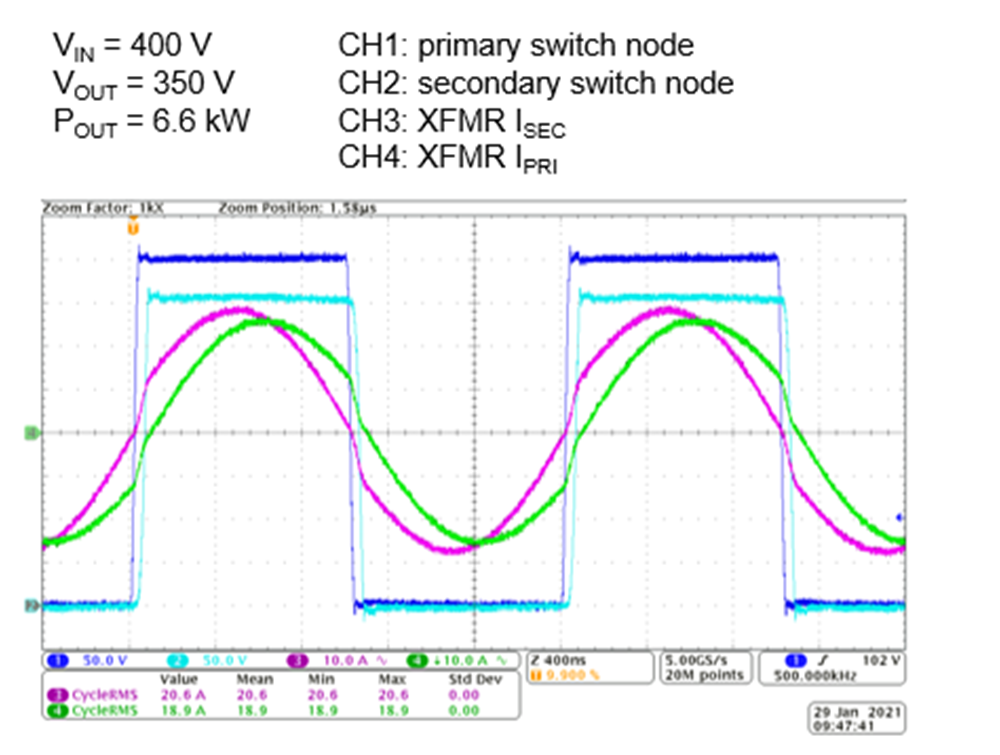SLUP412 February 2022 LMG3522R030-Q1
- 1 Introduction
- 2 Comparing Different Technologies
- 3 Advantages of Integrating the Driver With GaN FETs
- 4 The GaN-Based 6.6-kW OBC Reference Design
- 5 PFC Stage
- 6 DC/DC Stage
- 7 DC/DC Topology Selection
- 8 Frequency Selection
- 9 Core Loss
- 10Loss of ZVS
- 11Dead Time
- 12ISR Bandwidth
- 13Overall
- 14Resonant Tank Design
- 15Thermal Solution
- 16Layout Best Practices
- 17Control-Loop Considerations
- 18Conclusions
- 19References
- 20Important Notice
6 DC/DC Stage
The primary goals for the GaN-based OBC reference design are to minimize overall solution volume and maximize the electrical efficiency of the power conversion. To effectively optimize these parameters, the DC/DC stage must meet a few critical requirements. First and foremost, this converter is a battery charger. The wide range of output voltage values that the output needs to cover present significant challenges to many topologies; see the highlighted levels in Table 6-1. For example, a popular topology such as an inductor-inductor-capacitor (LLC) converter may have some difficulty meeting high efficiency over such a wide output range. In addition, the bidirectional nature of the converter might require a traditional LLC to have some additional tank components and facilitate the necessary gain.
| Description | Minimum | Typical | Maximum | Units |
|---|---|---|---|---|
| DC output voltage | 250 | 400 | 450 | V |
| DC output current | 20 | A | ||
| DC output power | 6.6 | kW |
The final solution achieved an efficiency of just over 98%, as shown in Figure 6-1.
For context, Figure 6-2 shows some essential waveforms during operation at full load.
 Figure 6-2 CLLLC essential waveforms at
full load.
Figure 6-2 CLLLC essential waveforms at
full load.Topology selection, operating frequency, tank design, operating modes, thermal management, layout and control optimization are among some of the more significant design challenges that we solved in the course of the GaN-based OBC reference design. Now, let us explore these challenges more, along with the rationale behind our decision-making.